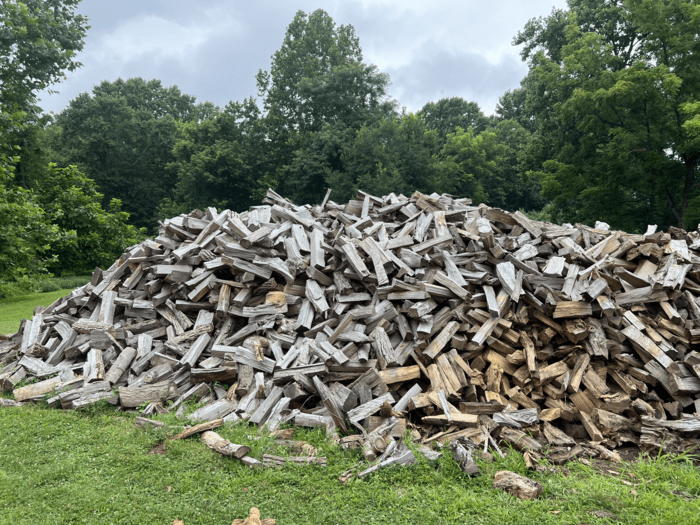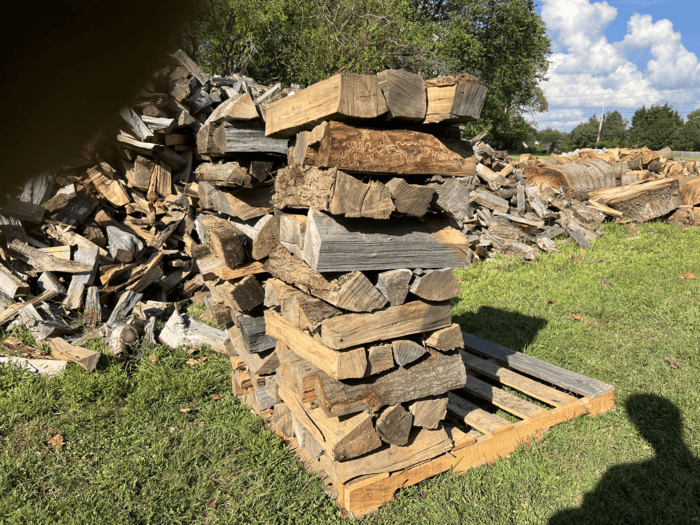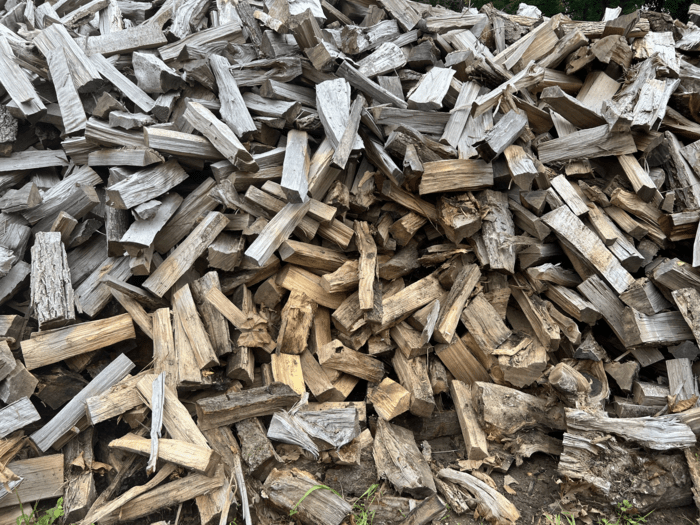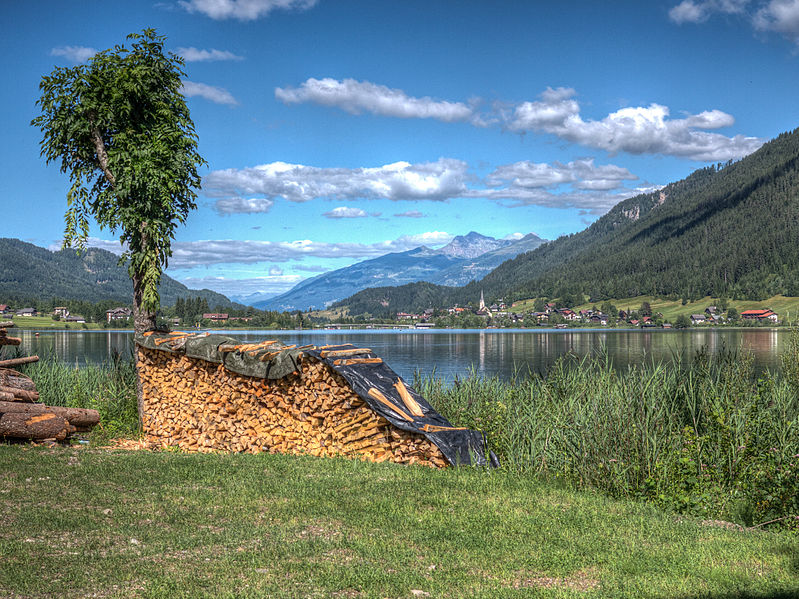I’m writing this on a rainy day and my firewood pile is soaked. Do I run for the tarp? No.
From my experience in years of splitting firewood, rain is not the end all for a firewood pile. It all depends on how it’s stacked. Here’s my pile for credentials:

Firewood can be rained on, just as long as the water doesn’t get trapped in the pile. Carefully stack your firewood on a sloped or elevated surface to prevent water from pooling at the bottom, and rain will not harm your firewood. If moisture gets trapped in your firewood pile, it will rot.
My pile is an example of how not to stack firewood. When it rains on firewood, water creeps between the pieces to the bottom, where the moisture is trapped and rots the bottom layer of my firewood. I use that “bad” wood for myself, and sell the rest.
At the end of the day, slightly rotten wood still burns when mixed with dried wood. So, what do I care?
I know my situation does not apply to everyone. Let’s go over how the rain affects firewood, how a tarp or firewood shed can remove any risk of rain rotting your wood, and how to prevent these options from causing even more rot.
In the right environment, rain only temporarily moistens firewood.
Firewood that’s fully exposed to the elements, but on an elevated surface, will not be affected by rain. Firewood needs good airflow to season and prevent rotting. This is why the firewood on top of my pile dries faster and better than firewood at the bottom.
The firewood at the bottom of the pile, covered on all sides from airflow and sunlight will be exposed to trapped moisture after rain. this water will cause the moisture content of the firewood to be higher than the rest, which will slow down the drying process and even cause the wood to rot.
Stacked firewood can get rained on, a loose pile cannot.
So, tell me reader. Which firewood pile will do better when its rained on?


Clearly, the carefully stacked wood will not trap moisture due to its better airflow. The sloppy-stacked wood, on the other hand, traps moisture in the pile. This will slow down the drying process, and cause wood on the bottom to rot.
If you look at the side by side comparison, the wood in the stacked pile is greener as you peel away pieces. This is because of rain being trapped inside and the pile preventing airflow to all the wood.
While this doesn’t mean this wood will rot, it does mean that it will dry slower. I’m lazy and threw my wood in a spot that puddles easily, which means the wood at the bottom will rot. That’s just one of the few disadvantages of stacking wood in a pile. If you’d like to read them all, check out my article: Firewood Will Dry in a Pile! (But not very well…).
Does a tarp protect firewood from the rain?

A tarp is the best way to protect your firewood from rain. Firewood that gets rained on slows down the drying process and puts it at risk of rotting. A tarp that covers the top pieces of a pile, while allowing airflow on the sides, will protect the firewood from rain while allowing it to season.
Take a look at the beautiful scenery above. The firewood is stacked nicely, allowing airflow on either side. It’s on a slope, which prevents water from puddling at the bottom and rotting the firewood.
While I may have chosen a different spot than right next to the water, this firewood will season nicely. The tarp covers the top layer of wood, protecting it from the rain. The rain wouldn’t ruin this wood, but you can have ease of mind knowing the wood will season as quickly as possible.
All in all, a tarp over the top of your nicely stacked pile is good for a recreational firewood pile, but unreasonable for the large commercial pile that I have.
If I were to cover my pile, I would trap any moisture that ends up under the tarp and turn my pile into a moist greenhouse. My firewood would season slower, rot faster, and be ruined.
How long does it take firewood to dry after rain?
It is not the end of the world if your firewood is rained on.
After a rain storm, assuming the sun comes out and the wood is nicely stacked, it will be fine to use after 3 hours. It takes long exposure to extremely wet conditions for split firewood to absorb water. It will be damp directly after rain, but still very useable for a fire.
This is why I don’t stress when it rains on my pile of wood. If it gets rained on, it will put it at a higher risk of rotting, but I use or sell all the wood before the season is over. It’s not sitting in one place long enough to rot, unless it’s at the bottom of the pile in a puddle of water or mud.
